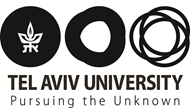Department Seminar of Shir Esh - Impact of Agrivoltaic collectors with spectral splitting on crop yield
SCHOOL OF MECHANICAL ENGINEERING SEMINAR
Wednesday 14.02.2024 at 14:00
Wolfson Building of Mechanical Engineering, Room 206
Impact of Agrivoltaic collectors with spectral splitting on crop yield
Shir Esh
M.Sc. Student, under the supervision of prof. Abraham Kribus, Dr. Helena Vitoshkin and Dr. Offer Rozenstein
School of Mechanical Engineering, Tel Aviv University, Tel Aviv, Israel
Conventional Agrivoltaic systems face a resource conflict as both crop’s photosynthesis process and photovoltaic collector’s power generation are driven by solar radiation. The innovative PV collector system examined in this research aims to resolve the conflict with spectral beam splitting of sunlight: most of the PAR (photosynthetically active radiation), 400-700 nm, is transmitted to the crops while most of the Near Infra-Red (NIR) radiation, 700-1100 nm, is reflected to a PV converter for power generation.
The effect of sunlight spectral modification on crop yield in an Agrivoltaic farm, under the presented system, is yet unknown. A broad examination was carried out for different crops under different climatic conditions using simulations with a widely-used Decision Support System for Agrotechnology Transfer (DSSAT) model. To validate the crop model for spectrum-splitting collectors, DSSAT simulations were compared with a tomato experiment under filtered sunlight. The model was able to predict the experiment's outcome, confirming its ability to handle modified sunlight conditions.
Simulations were carried out for 10 different field crops that are cultivated in 1300 km2 in Israel (about a third of the agricultural land in Israel) for 10 locations representing different climatic conditions across Israel. Each climatic area was represented by meteorological data collected in a representative station. Four cases were compared: full radiation, standard agrivoltaic opaque collectors (APV), spectrum splitting collectors at a density similar to APV (SS), and a dense SS system (DSS) providing a higher power output per unit land area.
A significant negative impact on crop yield was found for APV in most crops: a weighted average over all crops showed yield of 78% vs. the yield of the full sunlight case. Across all examined crops, SS demonstrably surpassed APV in terms of yield. Remarkably, both SS and DSS, exceeded expectations by maintaining or enhancing yield for six out of ten crops compared to full sunlight, despite a reduction in overall radiation flux.
All systems reduced water demand, with DSS emerging as the most promising. It generated similar electricity as APV (nearly double that of SS) and had positive or neutral yield impacts on most crops compared to full sun or SS. These results can support decision-makers and farmers in evaluating the agricultural impact of different APV collector technologies and selecting suitable crops that can benefit from a real-life APV system.
Acknowledgments
Support for this project was provided by the US-Israel binational agricultural research and development fund (BARD), grant US-5236-20, and as part of the Ministry of Energy program for scholarships in the field of energy.


